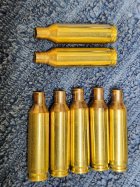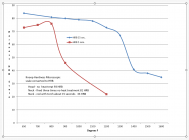Old Navy
Gold $$ Contributor
Can you ruin brass by over heating the neck?
This is what the brass looks like. I have tried every chemical and even Brasso to remove it. Nothing will touch it. The brass is Peterson 6XC necked down to .22XC. I just resized a few cases down using a .010 smaller bushing than the loaded neck OD. Feels the same as .003 smaller when seating the bullets.
This is what the brass looks like. I have tried every chemical and even Brasso to remove it. Nothing will touch it. The brass is Peterson 6XC necked down to .22XC. I just resized a few cases down using a .010 smaller bushing than the loaded neck OD. Feels the same as .003 smaller when seating the bullets.
Attachments
Last edited:












